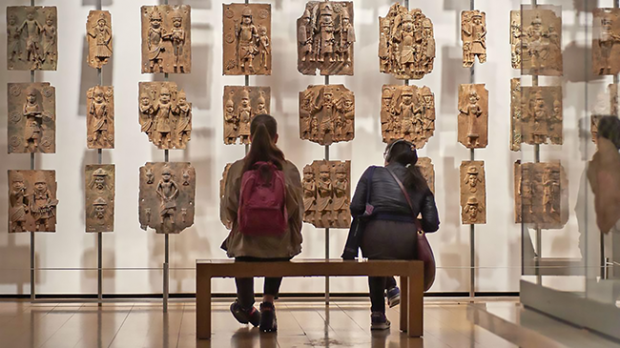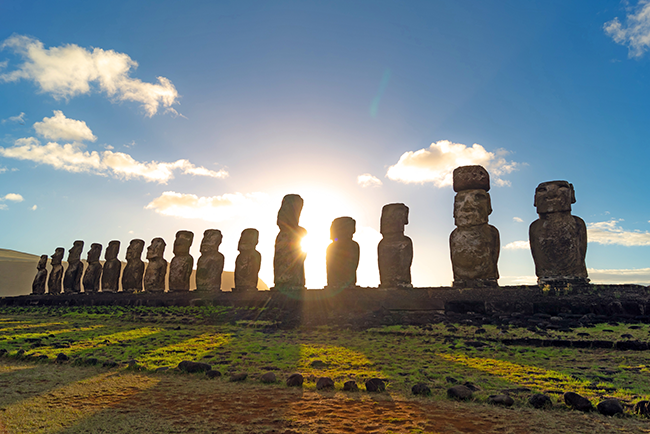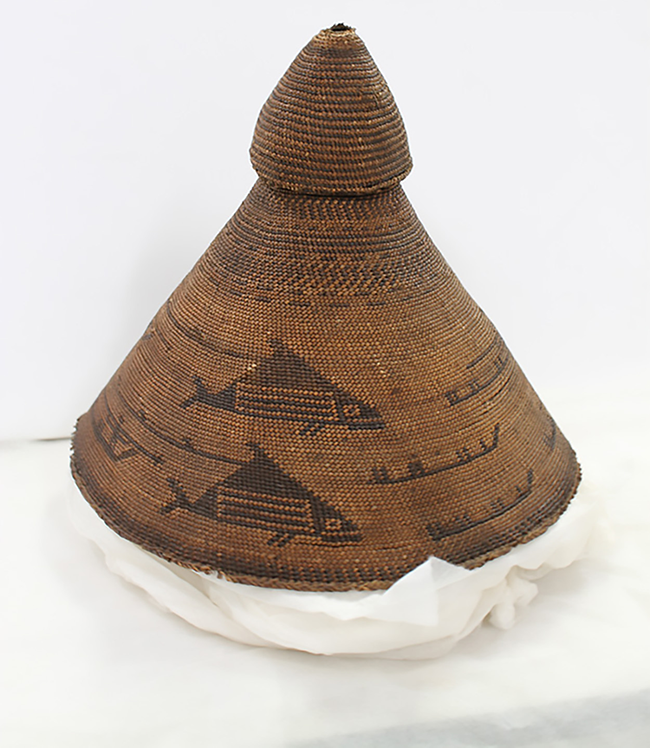18 February 2021 Edition
Stolen goods will always be Stolen goods

• The Benin Bronzes
Moai are the monolithic human figures carved by the Rapa Nui people of Easter Island. Weighing four tonnes, one of these monumental statues has stood inside the door of the British Museum for 150 years. The Elgin Marbles and the Benin Bronzes are other well-known artefacts that share a common thread; local people want them returned and campaigners are calling for their repatriation.
The National Museum of Ireland, the Hunt Museum in Limerick, and, possibly, the Ulster Museum all hold material looted during the destruction of Benin City, Nigeria (then the Kingdom of Benin) by British forces in 1897, according to Dan Hicks, Professor of Contemporary Archaeology at the University of Oxford.
Museums across France, Belgium, the Netherlands, and Germany – the former imperial capitals – are packed with collections, objects, and artefacts that have imperialist and colonial origins.
These ethnographic collections consist of items of human activity; including, but not limited to, art and sculpture, weapons, clothing, jewellery, tools, and decorations.
The National Museum of Ireland is home to around 11,000 objects and artefacts that form part of a non-European ethnographic collection acquired between 1760 and 1914. This collection contains concrete examples of people’s culture from the Pacific, Asia, Africa, and the Americas and has been described by Dr William Hart of Ulster University as one of the finest of its kind in the world.
The National Museum of Ireland currently holds its non-European ethnographic collection in storage at Collins Barracks, Dublin, while ethnographic material from Ireland is displayed at the National Museum’s Folk and Country Life site in Turlough Park, County Mayo.
Why does the National Museum of Ireland hold objects from around the world?
The National Museum of Ireland holds items that it would never collect today. This is because its collection is built on the collections of other institutions. The Museum of Science and Art, Dublin was established by an Act of Parliament in 1877. This Act transferred the collections and buildings of the Royal Dublin Society (RDS) into state ownership. Trinity College Dublin and the Royal Irish Academy later transferred much of their collections to the Museum of Science and Art in 1890 and 1894 respectively. After Partition, the Museum of Science and Art, Dublin was renamed and became the National Museum of Ireland.
Rachel Hand, writing in the extremely informative ‘Exhibit Ireland: Ethnographic Collections in Ireland’, explains that “the majority of these collections were acquired during the heyday of the British Empire, between 1860 and 1914.”
Hand continues, “the varied background to the acquisition of this material by individuals, travellers and servicemen meant that its collection was rarely systematic” and this “is the case in most museums with historic collections”.
“Collected by military men and their families, colonial officials and explorers, the ethnographic material of these early museums, including the Royal Dublin Society and Trinity College Dublin, is typical of the common interest in artificial curiosities among the educated upper classes – weapons, tools, and clothing of peoples in far-flung exotic lands.”

The statues carved by the Rapa Nui people of Easter Island, one has stood inside the door of the British Museum for 150 years
Other objects in the non-European ethnographic collection held by the National Museum of Ireland include a great deal of material from southern Africa, reflecting the British colonial presence there, and includes objects from the Zulu Wars.
There are also objects from the Maori Wars. Some of the material also came from surveys of the Pacific by the HMS Herald in the 1850s, which were originally acquired by the Royal Dublin Society. The National Museum of Ireland website also documents a Nuu-chah-nulth (Nootka) whaling hat, “probably brought back from Captain Cook’s third voyage”.
While some items in the collection are self-described as loot or taken during battles as trophies of war, not all of the artefacts were taken by force and many would have been souvenirs from people’s travels. In a colonial context, however, exactly how equal these exchanges and transactions would have been is questionable.
The repatriation of cultural objects is an enduring conversation in the museum sector and one which finds voice in wider society too. Recently, the Black Lives Matter movement and anti-racist protests have shone a light on the issue by placing a demand on museums around the world to return plundered goods to their places of origin.
In Paris last June, a Congolese artist, Mwazulu Diyabanza seized a Bari funeral pole from Musée du Quai Branly–Jacques Chirac. He and other fellow activists have been fined and, on occasion, imprisoned for various protests in European museums.
Campaigners around the world have long been concerned about what they describe as delay tactics or pretend transparency from the big European museums who profit from artefacts that were taken from the global south.

Nuu-chah-nulth (Nootka) Whaling Hat
In Ireland, recent minutes from a National Museum of Ireland board meeting show that they are developing a vision and an implementation plan that “examines, understands, engages and disseminates the provenance of the Museum’s collection and its colonial legacy.”
I spoke in the Seanad recently about the need for Government to develop a policy that would aid the work of any institution that holds objects with imperialist origins and to provide the necessary funding to support the digitisation and display of such objects in order to begin a broader national conversation about the repatriation of identifiably stolen objects.
During my Seanad debate with Green Party Minister Malcolm Noonan, I also noted that the British Library holds the largest collection of manuscripts containing Irish language material outside of Ireland. With over 200 items, this collection contains manuscripts dating from the 12th - 19th Centuries covering areas such as medicine, religion, law, grammar, history, and poetry and prose literature.
Many Irish manuscripts of vital importance are housed in British Libraries and Universities. They have been looked after well and they have also been digitised. However, many of these manuscripts ended up in British institutions due to landowners bequeathing them. The Book of Lismore was taken in a raid on Kilbrittain Castle in the 17th Century and was recently donated to the Boole Library at UCC by the Earl of Devon.
A key question is whether the optimum cultural value is derived from such manuscripts sitting in British libraries rather than in centres of learning here in Ireland, in close proximity to the key places referenced in the texts themselves.
The Government in Dublin need to develop a policy on the repatriation of cultural objects, including the return of certain objects to Ireland. This policy would aim to aid the restitution work of any institution that holds objects with imperialist or colonial origins. The necessary funding should also be made available to allow this work to take place in a timely manner.
Heritage artefacts from the Pacific, Asia, Africa, and the Americas that sit in storage in Ireland should be fully catalogued and placed on public display so as to enable a greater public awareness and conversation. Following this, objects that were identifiably taken without consent should be returned, provided it is safe to do so.
Against a backdrop of racial justice activism and a spotlight on the scourge of racism in our world, now is the time to address the colonial legacy of our museum collections.
Repatriation is a complex issue, but I approach it certain of one thing; stolen goods will always be stolen goods. Repatriation is an issue that is not going to go away. ♦
Fintan Warfield is a Sinn Féin Senator




